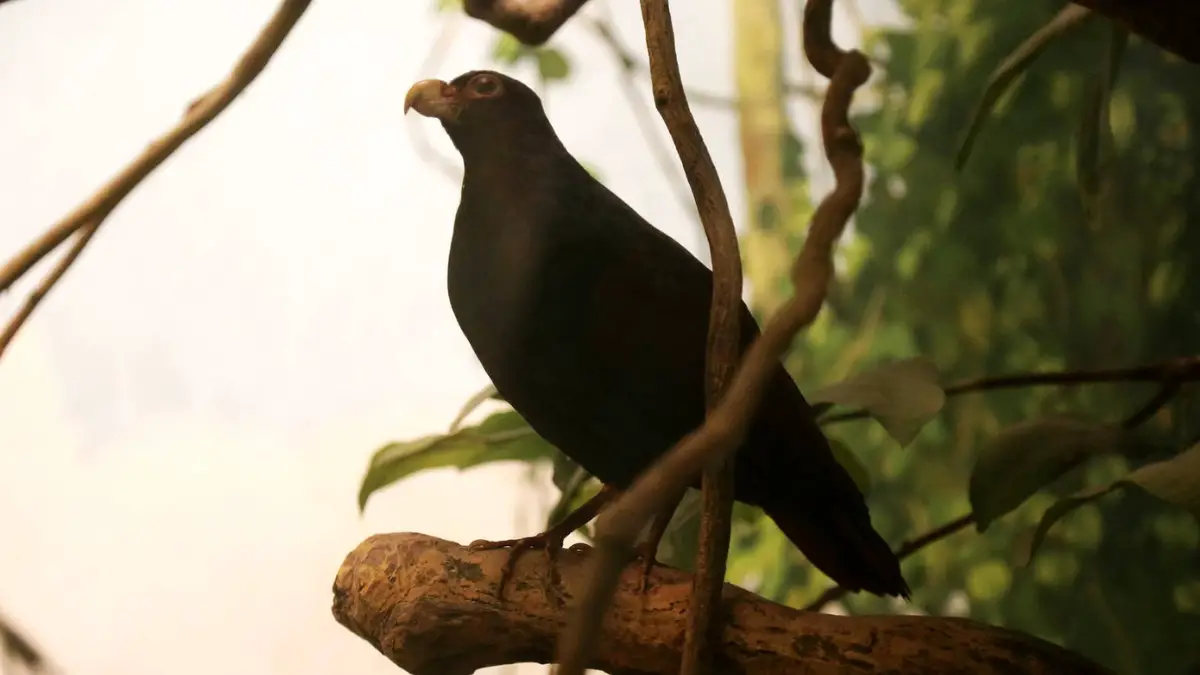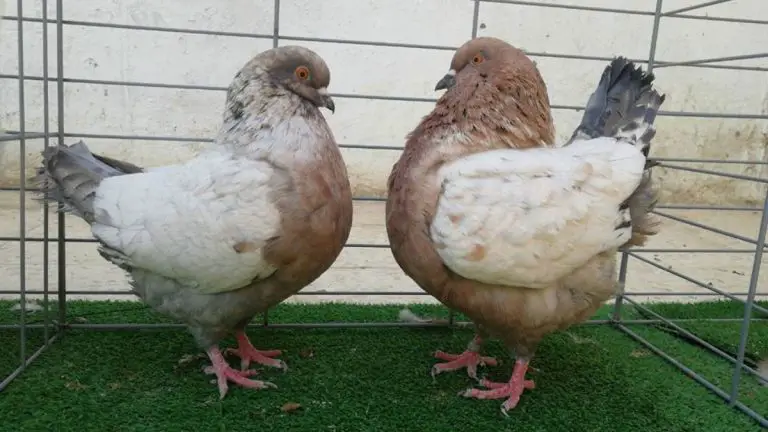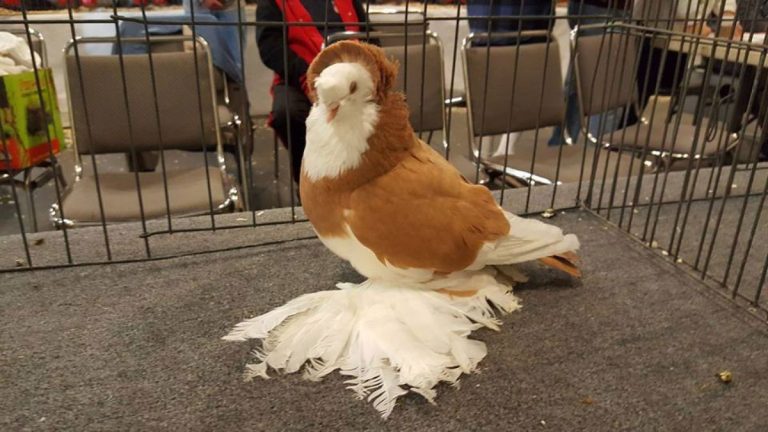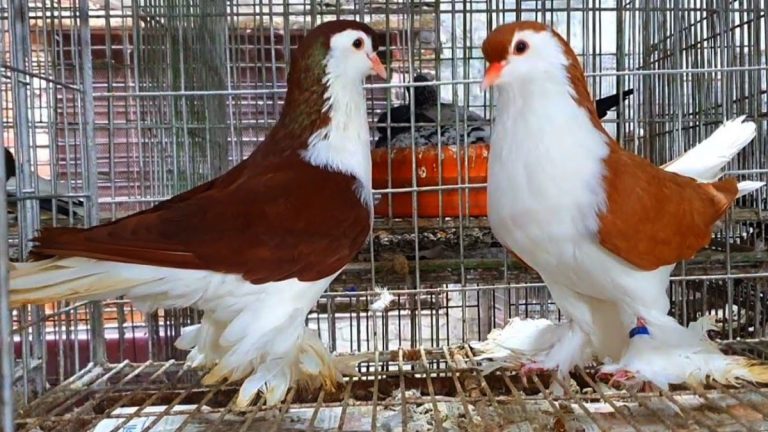Tooth-Billed Pigeon 101: Physical Characteristics, Habitat, Behavior, And Conservation Status
Tooth-billed Pigeon is the national bird of Samoa, also known as ‘Manumea’. Currently, they are considered ‘critically endangered’ according to the International Union for Conservation of Nature (IUCN). The birds are now on the verge of extinction, leaving only a few.
Therefore, it has become of great importance to conserve the birds and create awareness among the people. These birds have contributed to building the rainforests in Samoa.
Unlike other birds, they have their unique long beak, which helps them to eat fruits that are unreachable to many. As a result, they can also spread the seeds all around. Which later turns to numerous trees leading to the building of a small forest.
This article adds tooth-billed Pigeon habitat, physical characteristics, behavior, and conservation status with some bonus information. So, don’t miss to have a brief idea of the importance of the existence of tooth-billed pigeons. Keep reading till the end.
Tooth-billed Pigeon Physical Characteristics
Tooth-billed pigeon physical characteristics are considered as unique. Previously, people used to hunt birds as a food source. Even hunters would confuse them with pigeons. As a result, unknowingly, the pigeon was killed by the native people.
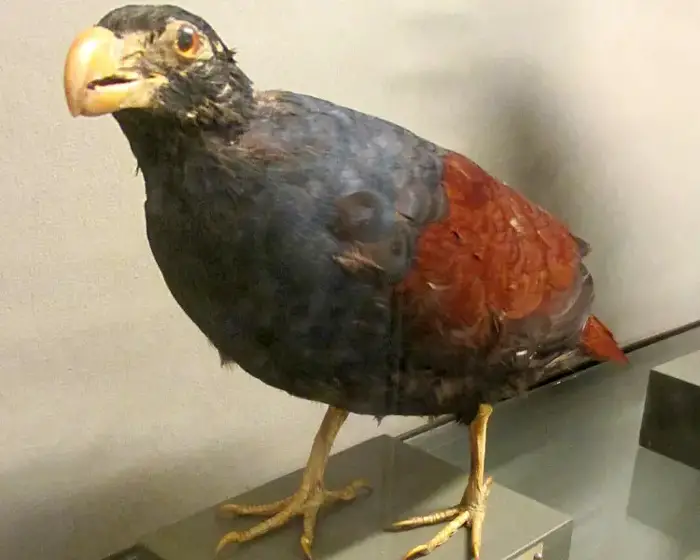
In this regard, knowing Tooth billed pigeons’ physical characteristics can help to identify them. Thus, it’ll create less chance of killing those rare birds.
Appearance
Previously, people used the feathers of the pigeon as decorative things because they have colorful feathers. And this makes them attractive to people.
- Their tail and wings are chestnut and their body is also iridescent. That’s why they appear colorful.
- Generally, they are 38 cm long, large, and dark in color.
- They have reddish feet and the head goes from grayish to greenish.
- Also, the skin around the eye has a bare red appearance.
- Their unique large bill generally has an orange base and moves forward with a yellow tip.
- Moreover, younger pigeons have black bills with reddish-brown tails. Whereas the female pigeon is more iridescent than the male pigeon.
Pigeon Diet Habits
The hooked bill of the tooth-billed pigeon helps them eat several fruits, which contribute to balancing the ecosystem by spreading seeds. They also maintain the bird ecology in nature.
- They have adapted to the environment of tropical rainforests with their incredible coping ability.
- Mostly, they are known to be seen on the ground and fed from the fruits, insects, and seeds found in the ground.
- Also, their curved beak tends to break down any fruit and enable them to eat with ease.
- Unlike other birds, they can also have Dysoxylum fruits with their long beak. As a result, they spread the seeds in the surrounding area and help in reconstituting the forest. Well, the pigeon diet mainly contains this fruit.
- Their hollow bills also allow them to drink water and reserve it.
- Moreover, younger birds are unable to take such fruits. Still, seeds, and fruits in the ground can be fed.
- The foraging habits of these pigeon species is the same as the other pigeon.
- They use carbohydrates and fat in their diet as the energy source, while protein is the building block.
Tooth-billed pigeon Habitat And Behavior
Tooth-billed pigeons are hardly observed in any other part of the world as they are endemic to Samoa. Researchers are still unsure of the exact Tooth-billed Pigeon behavior. Yet, some gathered information has enlightened a few of their behavioral characteristics.

Pigeon Habitats
These Pigeon habitats are generally found in the surrounding region of Samoa. They are observed in the tropical rainforests in Samua, islands such as Savaii and ‘Upolu.
Apart from that, they are hardly observed in any other part of the world as they are endemic to Samoa. They can live as a group or as singles.
It is also said that due to natural calamities such as cyclones in Samoa have reduced the number of these birds by a considerable amount. That’s why there are very few left and urgently requires conservation steps.
They make their nests generally in either banyan trees or on epiphytes. Those are thick and placed a few cm above the ground. Moreover, researchers have yet to find highlighting information regarding the nesting behavior of these pigeons.
Pigeon Behavior
From the observed bird behavior, it has come to the knowledge that these pigeons are very shy. However, it can change if you try to confine them in a cage. Caging can make them furious and aggressive toward other birds and animals.
Moreover, they hardly tend to develop friendliness towards humans and animals. Additionally, their social behavior is rather wild. They can not be tamed or confined in a small place.
Especially communication becomes impossible as they are stubborn and rude. They do not tend to fly much as they prefer ground more. But once they do, they go a long way and very fast, and it becomes impossible to see them again within the view.
Unlike other pigeons, their wings flap slowly during flying, also regarded as ‘clumsy flight’.
Tooth-Billed Pigeon Conservation Status
Manumea is rarely seen in Samoa as the number has decreased to a great level in a decade. This reduced number has a big impact on balancing the ecosystem. That’s why many organizations and even the government are coming forward to improve pigeon conservation.
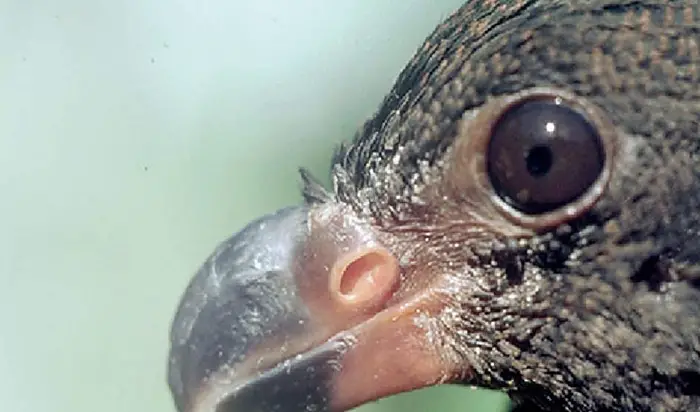
Conservation status
The cyclone, a fire in the rainforest area, has highly affected the lives of native birds, animals, and even people. The massive consequence of the natural calamities has affected the number of manumea and forests, leading to the title endangered Tooth-billed Pigeon.
This has reduced the number of existing lives and disrupted the ecosystem. However, in rebuilding the forest, manumea could play a big role. But it has become quite tough due to the lack of them.
On the other hand, people in those areas tend to hunt pigeons as a food source. Resulting in the killing of these Tooth-billed Pigeon species. Also, cutting down trees and destroying the forests can snatch away their homes. This makes them homeless and forces them to move to another place.
Apart from that, invading wild cats and rats have threatened the existence of the Manumea. That has killed the birds and driven them away from their residence. Now, they are on the red list provided by IUCN.
Initiatives
To improve the Tooth-billed Pigeon conservation status, certain measures have been taken by the government of Samoa (2006-2016). According to the initiatives, some of the actions taken are given below:
- Protecting the birds by ensuring the restoration of forests and their habitats
- Giving importance to habitat conservation
- Creating awareness among the people regarding the birds
- Monitoring the actions of hunters in those areas
- Creating new laws to conserve them
- Ensuring prevention of disease and parasitic action
- Facilitation of translocation
- Ensuring enough food supply
- Minimizing the invasion of rats, cats, and other predators
- Facilitating breeding to increase the population
Still, now, all these actions lack implementation to some extent. Meanwhile, the Covid’19 era has highly affected the actions of the government. Yet, various workshops by bird conservation organizations are already creating awareness to protect them.
Besides, many people still do not know much about the appearance of Tooth-billed pigeons. That’s why they become prey to hunters. To prevent this, various research institutions are doing workshops and campaigns.
Nevertheless, all of the above actions should be given equal importance with the proper application.
Interesting Facts
The number of Tooth-billed pigeons has decreased to a large number in recent years. Even researchers hardly have any evidence on many topics regarding the birds. Because of their rarity, their features are still under study.
While only locals can confirm the facts, some of the interesting facts about Tooth-billed pigeons are given below.
- A total number of only 70-380 Tooth-billed pigeons exists
- They are known as ‘dodlet’ or ‘little dodo’. And the scientific name is ‘Didunculus strigirostris’
- They can live up to 15 years
- The loud flapping noise of their wings was used to scare the warriors during their invasion or attack
- They are called the ‘Tooth-billed pigeon’ because of their extraordinary bill. Where the lower maxilla is shorter than the upper maxilla. So they can crack the hard fruits of Dysoxylum species
Conclusion
Overall, as manumea belong to endangered species, we should focus more on conserving them. Some initiatives have already been taken by non-profit organizations to protect them. Yet, the results are not found to be effective as manumea are hard to observe.
All these pigeons have contributed largely to the restoration of rainforests. That’s why we should not stop trying.
Spreading knowledge regarding their impact on tropical rainforest ecosystems will help to create awareness among people. Also, introducing campaigns and workshops will contribute to this process.
